Plant and Soil Health: Soybeans and Nitrogen Cycling
Back in May 2015 I posted a blog titled “N on Beans: A Different Perspective.” I suggested that the reason soybeans don’t consistently respond to supplemental nitrogen is due to the following factors: Yield potential is too low (soil and N fixation can meet the plant’s needs) Nitrogen fixation is very high Soil is capable of delivering greater amounts of nitrate than we think On March 18 of this year a reader posted a comment based on reading this blog. He stated “I’ve done some tile water testing for N following soybean crops and found levels at times to [...]
Plant and Soil Health: Micro and Secondary Nutrients on Soybeans: What’s the story?
Recently, I read an article published by a well-respected group of academic researchers on the effects of micronutrients applied to soybeans. Their results showed no increase in yield and inconsistent increases in plant tissue and grain micronutrient content on plots treated with one product or combination of products. I have no doubt, on the plots they tested, the results they published are correct. Many times in small, replicated plots very little if any yield changes are achieved regardless of what is being tested. There can be several reasons for this. Most of the time these plots are planted on [...]
Agronomy: Getting The Most Out of Your Acres
Another alternative to planting corn is double cropping soybeans after wheat. Steve Jobs, the founder of Apple, once said “Your time is limited so don’t waste it living someone else’s life. Don’t be trapped by dogma—which is living with the results of other people’s thinking.” Thanks to a lifetime in the ag industry and a career that has blessed me with the opportunity to work with farmers from coast to coast—from the borders of Florida to within a few hours of Alaska—I have seen a lot of different recipes for success. Perhaps the most important thing I have learned [...]
Plant and Soil Health: Consider Applying Boron on Soybeans
Soybean yield is related to pod and seed set per acre. And soybeans have a whole lot of growing points leading to branching and flower set. Boron plays a role in growth and differentiation. Having boron available at the right time plays an important role in final pod set and production. Something to think about. Boron is an important micronutrient in plant development, reproduction and sugar movement. Soils typically provide sufficient amounts of boron to the plant up front but in some instances it can be deficient. Because boron is needed only in very small quantities, and since an [...]
Agronomy: Soy Summit: Peoria
The second 2016 Soybean Summit continued to build on Illinois Soybean Association’s goal of gaining more yields with 199 soybean farmers gathering in Peoria, Illinois on Thursday, February 25. Chad Colby of Colby AgTech, Darin Newsom of DTN and Kip Pendleton of The Pendleton group anchored the day as our keynote speakers, bringing incredible insight into how we can make the push for improved yield and profitability. Several other industry experts were also on hand for breakout sessions including Angie Peltier (University of Illinois), Emerson Nafziger (University of Illinois), Mark Bernards (Western Illinois University), and Lance Tarochione (Monsanto). If [...]
Agronomy: Continuous Beans: Are soybeans after soybeans profitable?
Recent analysis suggests that soybeans have been more profitable than corn in Illinois from 2013 to 2015, and there is a reasonable chance that soybeans will be more profitable than corn in 2016 (farmdoc daily, February 16, 2016). Soybeans being more profitable than corn leads to the question: Should Illinois farmers raise more soybeans and cut back on corn acres in 2016? For many Illinois farmers, raising more soybeans will require planting soybeans on farmland planted to soybeans in 2015 (soybeans-after-soybeans). In this article, soybean-after-soybean budgets are presented for four regions of Illinois. When the previous crop is soybeans, [...]
Agronomy: Surprising Strength in Soybean Prices
The U.S and world soybean situation continues to be one of surplus. The USDA's WASDE report of March 9 projected 2015-16 marketing year ending stocks of U.S. soybeans at 460 million bushels, 10 million bushels above the February projection. The projection of world ending stocks, with stocks for Argentina and Brazil adjusted to an October-September marketing year, was lowered by 57 million bushels, but those stocks are still expected to be record large. At the projected level, U.S. stocks would represent 12.5 percent of projected use for the year. Stocks as a percent of use have been larger on numerous occasions, [...]
Agronomy: Soy Summit: Effingham
With a mission of gaining more yield, 250 soybean farmers converged in Effingham, Illinois on Friday, January 29, for this year’s first Soybean Summit. David Kohl, Virginia Tech and Nick Paulsen, University of Illinois anchored the day as the two keynote speakers, but attendees also got to listen and network many other experts in the soybean industry. John Pike (University of Illinois), Jason Webster (Beck’s Hybrids), Dick Lyons (Illinois Council for Best Management Practices) and Glenn Longabaugh (Winfield) all lead 45-minute breakout sessions that each grower could attend. Three farmers also participated in a roundtable discussion on how they [...]
Agronomy: Risks of Saving and Replanting Roundup Ready® Soybean Seed from Harvest
Recently, with the expiration of the U.S. patent of the original Roundup Ready soybean trait (RR1) in 2014 and the third party patent in 2015, many questions about saving seed have started to surface. Don’t be fooled, patent law and seed technology can be complicated. If you buy a soybean variety with the Roundup Ready 2 Yield (RR2) trait, most understand it cannot be resaved and planted. However, if you buy a soybean variety with RR1, even though the RR1 trait patent has expired, most of these varieties are still covered by other U.S. patents to protect specific characteristics [...]
Agronomy: Spring Wheat Management – Time to Pay Attention
As we approach Easter here at the end of March the wheat crop across southern Illinois looks very good on the whole. Planting right at the fly free date, mild fall temperatures and adequate soil moisture aided in the establishment of a very good stand. The milder than usual winter has also aided in producing the nice, beautiful stands we see across the region. The only issues to date have been water ponding from heavy winter rains and some freeze/ice damage done right after some of those rains in February. This has left some low or wet areas with [...]

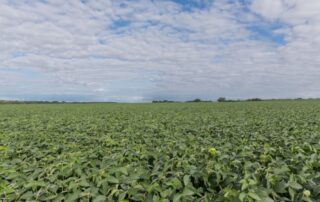
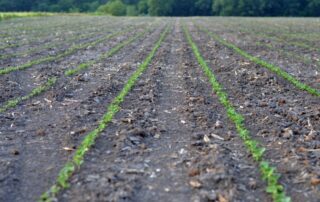
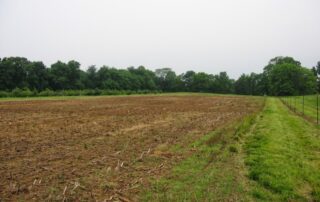
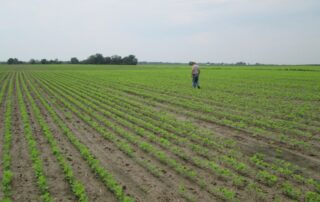
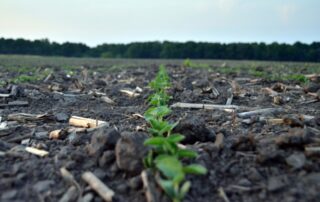
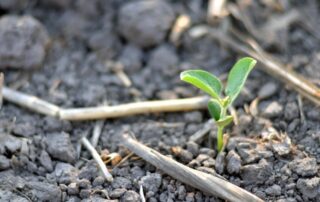
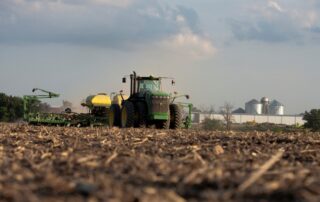
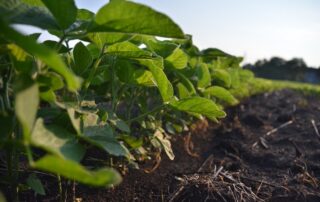
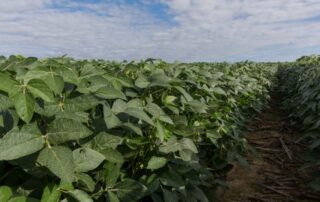
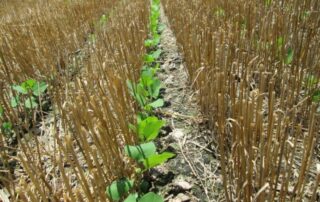



 and then
and then